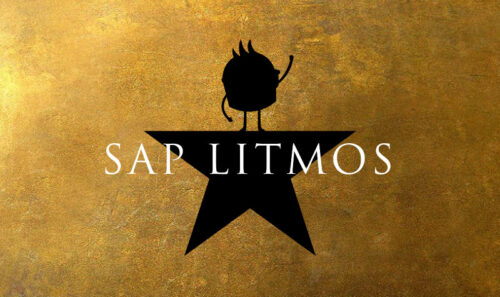How Would Hamilton Launch a Learning Program?

I was lucky enough to see the musical when it played in San Francisco. Since then, I’ve been listening obsessively to the soundtrack, doing my best impressions of the Schuyler sisters and struggling to keep up with the quick-fire raps of Daveed Diggs. So, you could imagine my surprise that when I sat down to watch the film my mind kept finding parallels between lessons learned in the show and the world of learning and development.
Throughout the show we see the “ten-dollar founding father” without a father navigating through a revolution and development of a new country, which might feel familiar to those in the L&D industry who are trying to develop a new learning program or are trying to adapt your current one to the new realities of corporate training during a pandemic.
If your learning program is young, scrappy, and hungry, you might find the show provides you with insights and inspiration for launching your program.
You Should be Lookin’ for Minds at Work
“The Schuyler Sisters” is a high-energy song in the first Act of ‘Hamilton’, where we see some of the main characters discussing the bubbling revolution and being inspired by new ideas and ideologies. One of the most important parts of launching a learning program is getting people within your organization excited about it. That’s where a pilot program and a messaging campaign can play to your favor.
A pilot with a small group of users will help you understand where your program stands before you launch it to everyone in the company. You’ll be able to put a microscopic lens on your program and understand how effective it will be at a larger scale.
Additionally, an ongoing messaging campaign will help to capture the attention of learners and create company-wide excitement before you launch your program.
Have Your Company’s “Washington” on Your Side
In the musical, Alexander Hamilton finds success in being the right-hand man to the one and only George Washington. You know, the first President of the United States? Pretty big deal. The President’s affinity for Hamilton is one of the main factors that drives his rise to the top. Just like the titular character, when launching your platform, it’s important to have the leaders of your company on board and supportive of your program. Their influence can help to drive adoption of the project across the company.
Learning Should be Non-Stop
At the end of the first act, Aaron Burr wonders, “How to account for his rise to the top? Man, the man is non-stop.” I’d like to think he’d sing the same thing about learning; it shouldn’t stop. When you’re mapping out your learning program, it’s important to consider your long-term goals. It’s not enough just to get your program set up; you have to create a plan that supports your future goals.
Make learning non-stop by implementing these elements:
- Drip learning: When you combine traditional learning elements with automated lesson drops, this helps with repetition and practice, encouraging deeper learning retention. Therefore, one of the best ways to enhance learning engagement and promote practice retrieval is to drip feed regular microbursts of content, giving the power of continuous learning to your participants.
- Gamification: Incorporating game elements into your learning program is a great way to empower learners to act freely, show competency, and work together. The competition is ongoing so it keeps learners engaged, energized, and coming back for more.
- Learning in the flow of work: Rather than asking people to take time out from their jobs to attend training, learning in the flow of work delivers courses to them while they’re working – often in the systems they use the most, such as CRM.
Your Learners May Never Be Satisfied (But That’s Ok)
When Renée Elise Goldsberry belts out “Satisfied” you feel her emotion and struggle with the idea that nothing will make her (or Hamilton) satisfied with what they want from life. This is a feeling you might find with your learners from time to time. There will always be that one person who has a million critiques. While it’s important to listen to their feedback, it is also important to remind yourself that you can’t make everyone happy. So, what can you do to make sure they are as satisfied as possible?
- Access: When it comes to eLearning, access should be easy. Whether that means your platform is available on multiple devices or an intuitive interface, your learners will appreciate the ease of use.
- Variety: Your learners are all unique. When setting up your courses and modules, be sure to have a variety of media, assessments, and gamification.
- Micro-learning: Studies have shown that small, bite-sized learning can help keep your learners engaged, drive better retention rates, and enable higher course completion rates!
- Fresh Content: Learners are smart! When they’re given old and outdated content, they become disinterested in keeping up with their learning. Be sure to actively update your course content or consider investing in off-the-shelf content.
Don’t Throw Away Your Shot
One of the show’s most popular songs, “My Shot” describes Hamilton’s desire to find success and make choices that will help him to thrive in a newly established government. Approach your learning program launch with the same vigor. Have a plan, utilize your internal advocates, make sure you’re creating a program your learners can’t get enough of, and give it your all.





